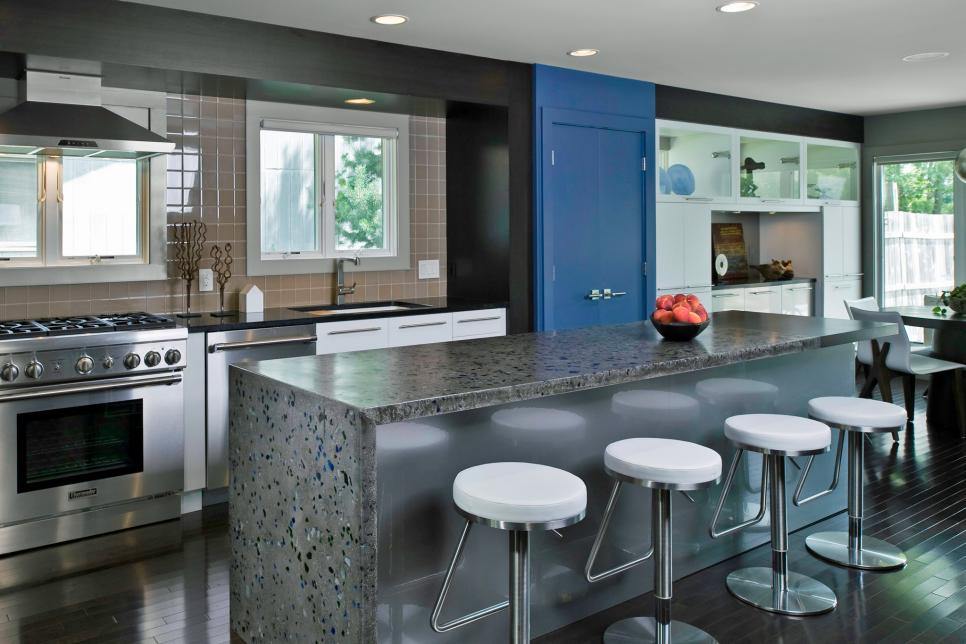
Galley Kitchen "Creating visual impact and keeping functionality in this narrow area was my main challenge with this particular project," says Vita Buffa, CKD, CBD, NCIDQ. To meet the challenge and provide her client a gorgeous, green galley, Buffa moved a classic table that was beautiful but impeded traffic flow, and relocated the refrigerator and microwave to the opposite wall so as to make a more visually pleasing perspective when sitting in the adjacent room.
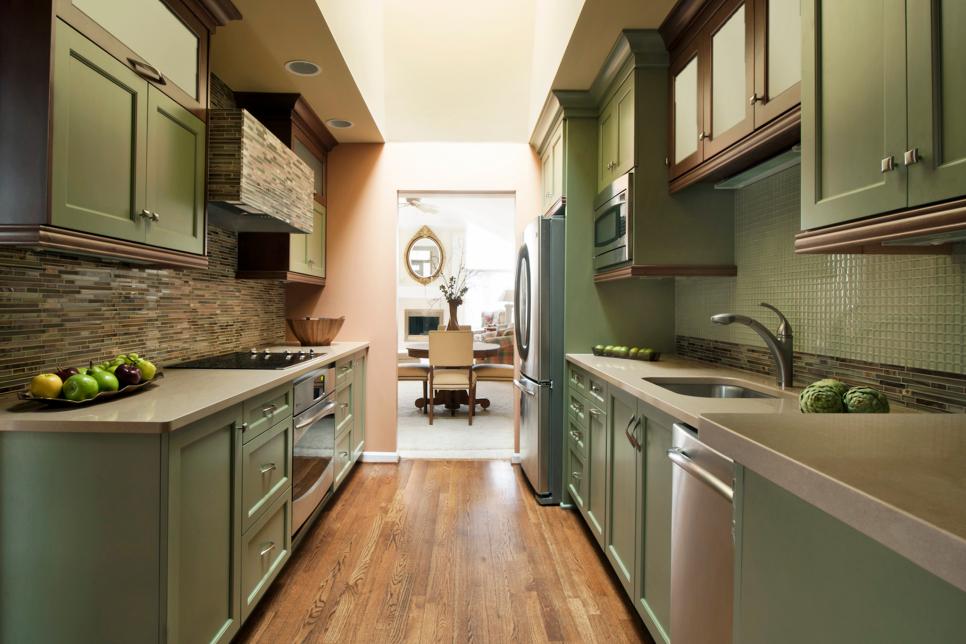
Galley Kitchen This 8-foot-wide kitchen by Aimee Nemeckay and Terri Crittenden for your Susan Fredman Design Group hangs a twist into the adjoining dining room. To make it appear larger, the designers continue the horizontal lines down the long kitchen both from the kerf, or incised line, of their cabinets and the floor. The cabinets reaching the ceiling draw up the eye as well.
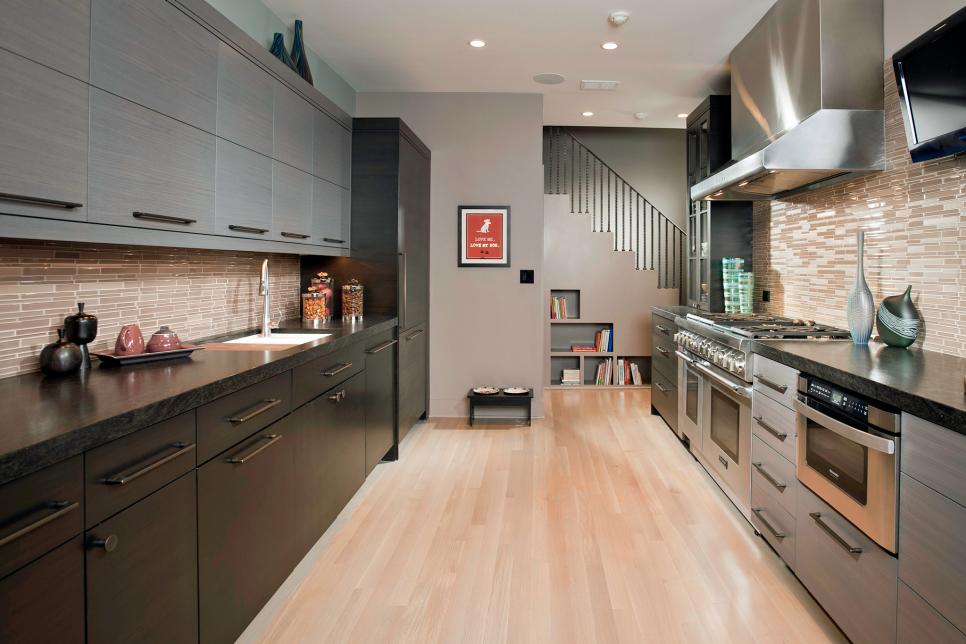
Galley Kitchen By removing the two half walls between the dining and living area of this 1960s bungalow, designer Nathalie Tremblay managed to enlarge the kitchen, make an open feel and provide a better design and traffic flow of the kitchen, living and dining space. And lots of the tips she used to maximize distance in this galley would function well for any small kitchen: She utilized 24-inch-deep refrigerator/freezer for space saving and better traffic flow, created a work "triangle" regardless of the corridor-like shape of the actual space, and picked a simple, black-and-white palette to keep visual clutter to a minimum.
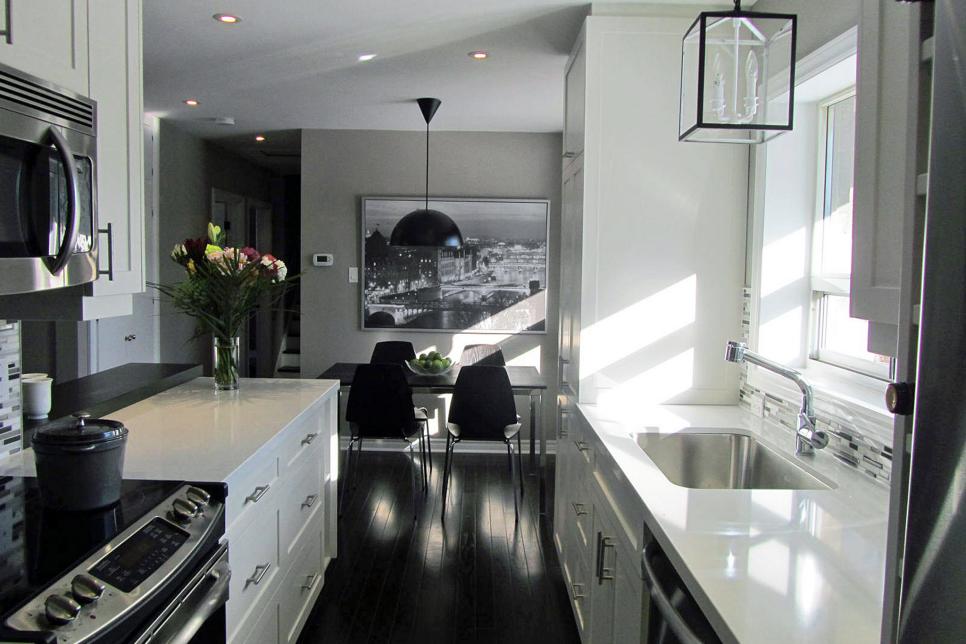
Galley Kitchen To keep this small galley kitchen looking as good as it works, Natalia Pierce, AKBD, picked a neutral, earthy palette and installed a comfortable window seat. The flow of light from the adjacent dining area through the pass-through retains the kitchen connected to the remainder of the home and sets hosts connected with dinner guests. Art in the far end wall keeps the kitchen from appearing like a dead-end.
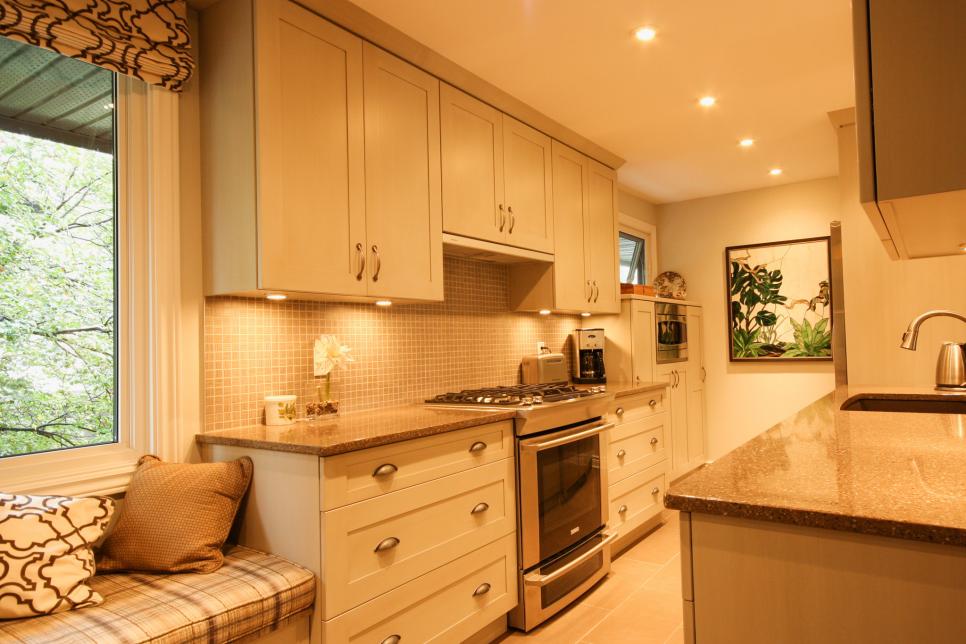
U-Shaped Kitchen Pre-renovation, this kitchen was tiny and cut away from the rest of the home. Designer Linda Evans, CKD, CBD, CAPS, knocked down the wall between the kitchen and dining room, and turned into the former into a horseshoe which not only maximizes space but generates a delineation between the kitchen and dining spots.

U-Shaped Kitchen To add extra prep and storage space to this tiny kitchen, Natalia Pierce, AKBD, additional two peninsulas, developing a U-shaped kitchen. A raised bar was added on the sink side to break up the site lines through the space.
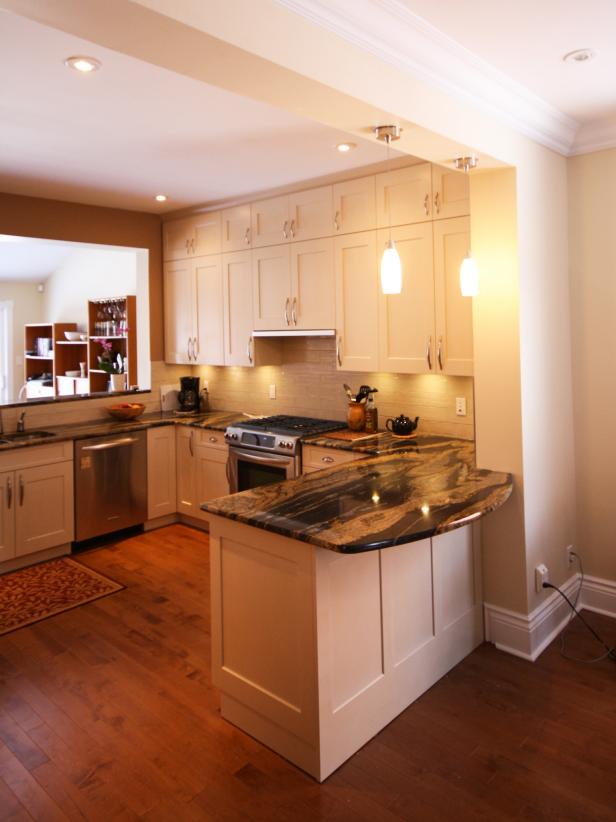
U-Shaped Kitchen As a secondary kitchen on the top floor of a gorgeous art deco home, this space doesn't have to be big but it did need to operate effectively. Designer Myriem Drainer took the best elements of U- shaped and L-shaped kitchens to create this one-of-a type layout. Clean lines and a marble backsplash that extends into the ceiling create an illusion of a wider and brighter space, and small because it is, the counter configuration supplies amazingly ample dining and prep room.
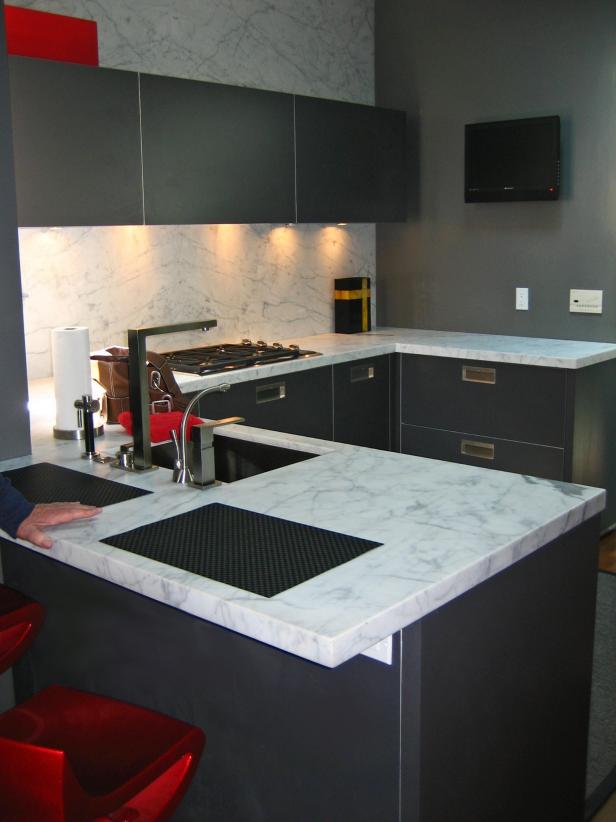
L-Shaped Kitchen Designer Nathalie Tremblay opened up and moved walls to make this L-shaped kitchen/dining place for clients who like to entertain. An L contour retains the hosts close to their guests while cooking, and enables guests to eat without feeling like they're on top of the cooker.
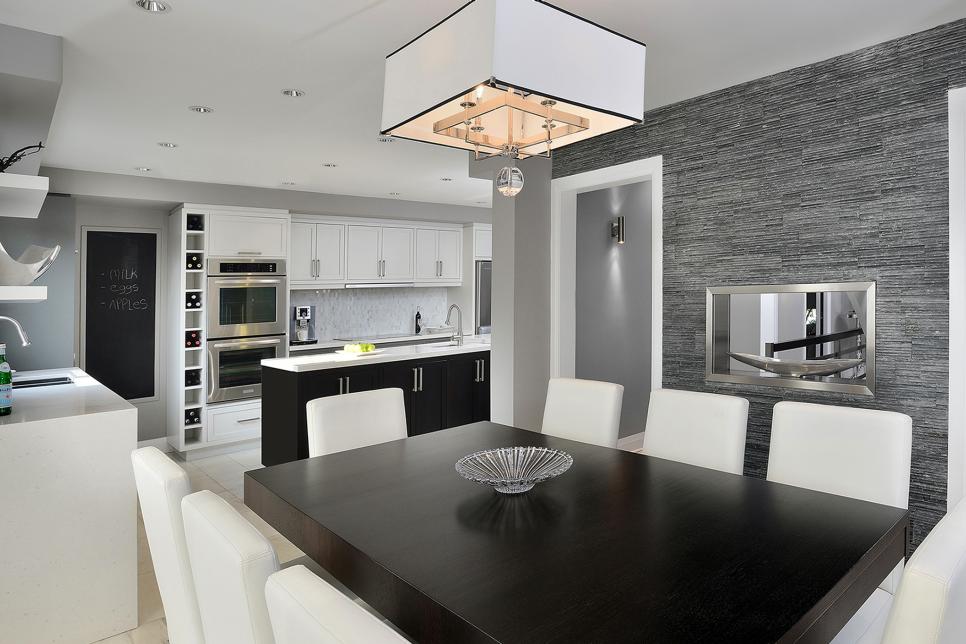
L-Shaped Kitchen This kitchen's long, efficient prep room resembles a galley layout but is just half of the L-shaped kitchen which turns out a corner for maximum preparation room and eat-in dining. Design by Amy Alper.
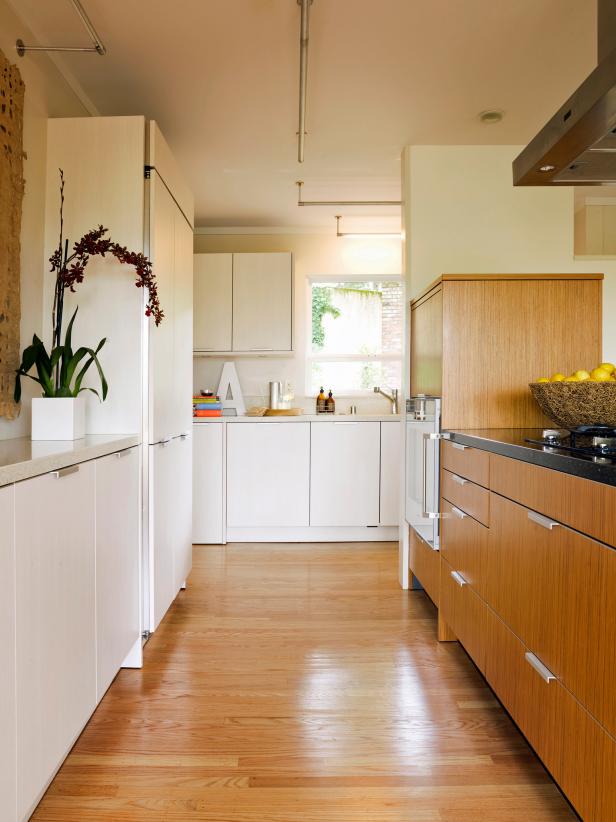
L-Shaped Kitchen This kitchen, that won First Place in large kitchen category in NKBA Ontario Design Awards in 2013, uses an L-shaped floor plan and T-configured center island to make the most of space, and to make the sleek, masculine look designer Nathalie Tremblay's client requested.
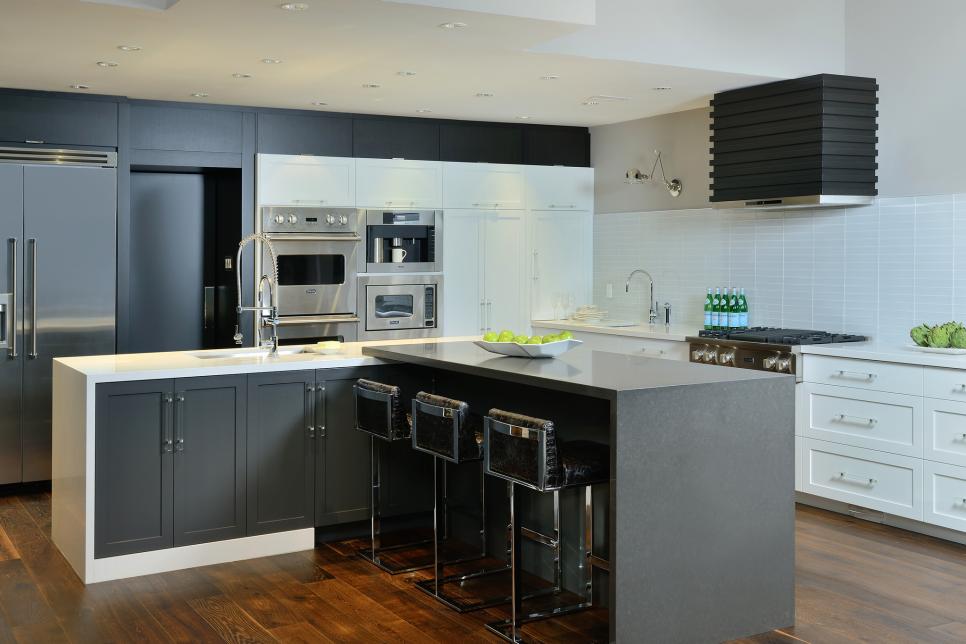
Pentagonal Kitchen It's no secret that squeezing maximum efficiency from a five-sided kitchen with odd angles took a great deal of imagination. Eric Lindroth of Remodel Works Bath and Kitchen transferred walls to expand the floor's footprint under the vaulted ceiling, eliminated soffits and construction supports in the attic for the present rafters, and extended the present walls to the ceiling.
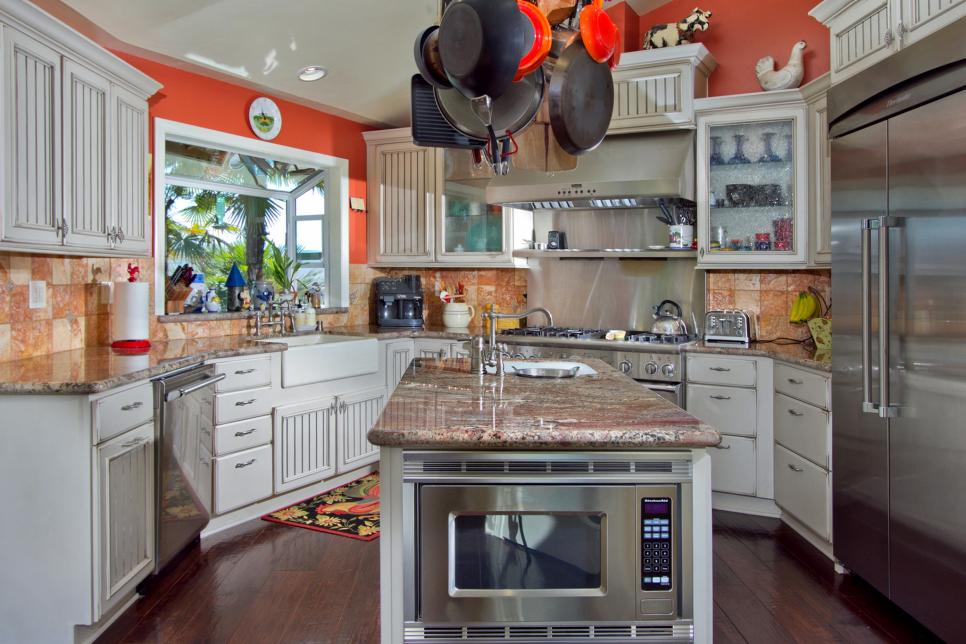
Curvilinear Kitchen When her client -- an engineer and metal sculptor -- told Rhonda Knoche, CMKBD, he loathed symmetry and direct lines, which he wanted a kitchen that would make him smile, she listened. The main prep area widens to accommodate kitchen action -- and, sometimes, dancing. The extended wall is a bit bowed to satisfy the deeper front of this range, tapering back at either end into the standard 24" deep cabinets. And the kitchen island is an ice-cream-cone form. "The partition looking toward the entrance could have been a direct wall," says Knoche, "but whenever I threw this client a curve, he was at the plate."
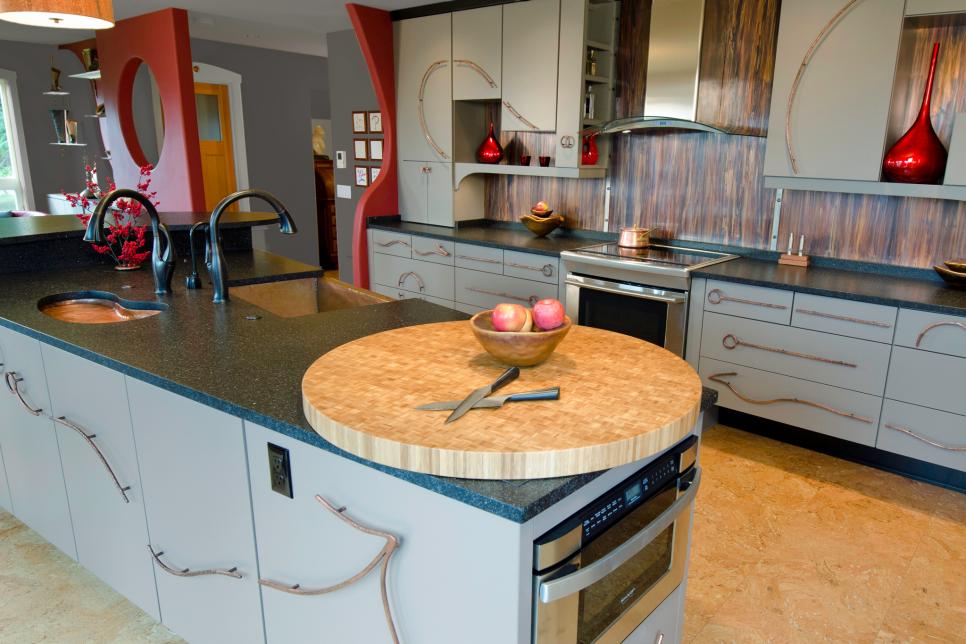
Wedge-Shaped Kitchen To take advantage of the wedge-shaped kitchen, Eric Lindroth of Remodel Works Kitchen and Bath replaced the existing rectangular island using a wedge-shaped one. By echoing the area's perimeter shape, you may keep walking aisles constant, so the room feels balanced and nothing seems forced or mismatched. With its wider end, the island matches all of the homeowner's baking needs, also offers close proximity to the cooker.
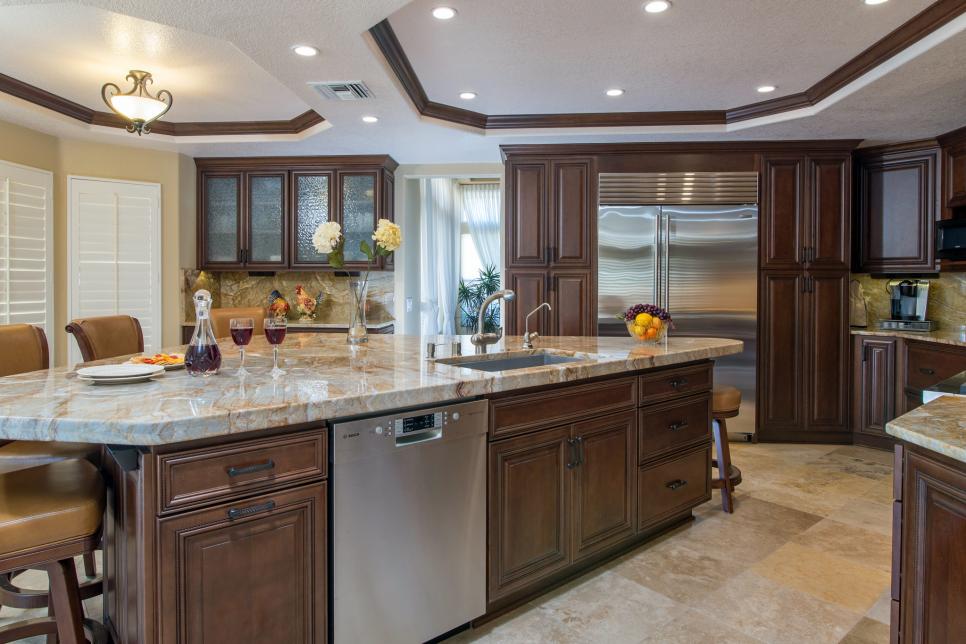
Wedge-Shaped Kitchen That's no optical illusion: This kitchen by Ines Hanl of The Sky's The Limit Design really is shaped like a wedge. As opposed to fight the strange form, Hanl she performed with it, and created an intensely angled island and banquette, then decorated the area with a funky '50s vibe. Lesson learned: In an area that flows strangely, it is sometimes best to just go with the flow.

No comments:
Post a Comment